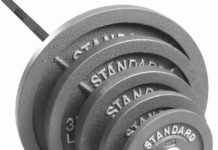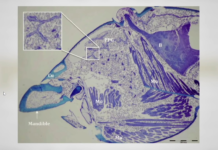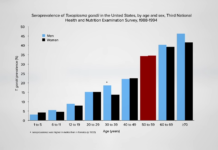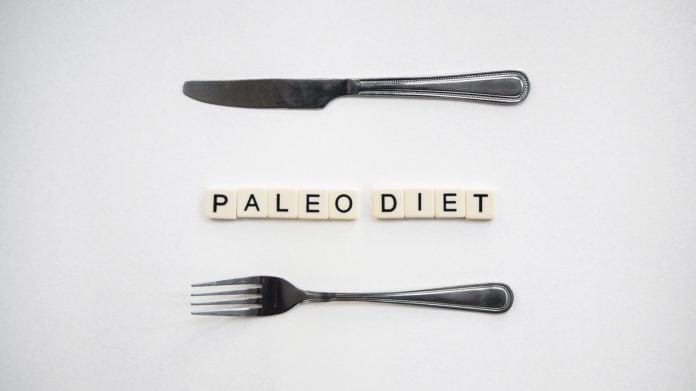Table of Contents
The Paleo Diet, also known as the Paleolithic Diet or Caveman Diet, is an eating plan modeled after how humans would have eaten in prehistoric times. It focuses on eating whole, unprocessed foods including fruits, vegetables, nuts, seeds and proteins from both plants and animals. By avoiding processed sugars, grains and dairy, followers of the Paleo Diet can benefit from improved health and wellness.
The Paleo Diet draws on historical roots, based on what cavemen might have eaten during the Paleolithic era. This period was from 2.5 million to 10,000 years ago and it is believed that this period of time was a primary contributor to human genetic evolution. While the diet does not reflect the exact foods that those in the Paleolithic era ate, it is based on similar concepts – eating natural, unprocessed foods that would have been available at the time.
The Paleo Diet now encompasses multiple aspects, such as exercise and lifestyle, and has become a popular way for people to improve their overall health and wellness.
Benefits of the Paleo Diet (Paleolithic Diet)
The Paleo Diet, also referred to as the Paleolithic Diet or Caveman Diet, is based on the diet of our ancient ancestors. It consists mainly of unprocessed foods such as vegetables, fruits, nuts, seeds, and lean meats. It is believed to have several health benefits including improved weight loss and reduced risk of chronic disease.
By eating a predominantly plant-based diet, research suggests you may be able to reduce your risk of high cholesterol and improve overall health. A Paleo Diet is a high-fiber diet that promotes the intake of healthy fats and proteins while avoiding processed foods, sugars, grains, legumes, dairy, and unhealthy fats. Studies have shown that it may lead to a lower risk of chronic inflammation, heart disease, obesity, diabetes, and certain types of cancer.
In addition to its potential health benefits, research suggests that the Paleo Diet can also help with weight loss. By avoiding processed and sugary foods, it can help reduce calorie intake and decrease cravings. Additionally, the high-fiber content of the Paleo Diet helps keep you fuller for longer, reducing hunger and preventing overeating.
Overall, research indicates that the Paleo Diet is a nutritious diet that may lead to a number of health benefits. It is important to remember, however, that following the Paleo Diet is not a quick fix for weight loss. You should make sure to focus on eating healthy and balanced meals to ensure you are getting all the nutrients your body needs.

Getting Started on the Paleo Diet (Paleolithic Diet)
For those who are interested in living a healthier lifestyle, the Paleo (also known as Paleolithic) Diet is an increasingly popular choice. This diet seeks to mimic the eating habits of early humans, such as our hunter-gatherer ancestors. By staying true to the dietary practices of the past, the Paleo Diet is believed to be one of the healthiest and balanced diets available today.
When beginning the Paleo Diet, it’s important to know which foods to focus on eating, and which to avoid. Foods that should be emphasized include lean proteins, vegetables, fruits, nuts, and seeds. On the other hand, foods to avoid include processed grains and sugar, legumes, dairy, and processed oils. In general, it’s recommended to stick to fresh, natural, unprocessed foods.
In terms of proteins, sources such as wild-caught fish, grass-fed beef, organic chicken, and pasture-raised eggsare all great options. When looking for vegetables, try to shop organic and buy whatever is in season. As for carbohydrates, focus on eating low glycaemic fruits such as apples, oranges, and pears; and starchy vegetables like potatoes, sweet potatoes, squash, and yams. Nuts and seeds can be used as snacks or used to top meals.
Having healthy snacks on hand is important for staying on track with the Paleo Diet. Some great options include trail mixes, hard-boiled eggs, homemade jerky, nut butters, and roasted nut snacks. Preparing meals in advance is also a great way to stay organized. Having ready-made meals and snacks available will make it much easier to stick to your goals.

Recipes for a Healthy Paleo Diet (Paleolithic Diet)
The Paleo Diet (Paleolithic Diet) is all about eating the way our hunter-gatherer ancestors did. This means consuming natural, nutrient-rich foods that can be found in nature. It's not about cutting out all carbs or counting calories. Instead, it's about enjoying wholesome meals full of proteins, healthy fats, and plenty of fruit and vegetables.
The good news is, there are plenty of delicious recipes out there that are both healthy and easy to make. Here are some ideas for breakfast, lunch, and dinner that adhere to the Paleo Diet:
- Breakfast: Vegetable omelet with avocado slices, eggs with bacon and spinach, sweet potato pancakes, chia pudding with berries.
- Lunch: Grilled salmon with quinoa salad, vegetable stir-fry with beef, turkey patties with mashed cauliflower, veggie wrap with hummus.
- Dinner: Lamb chops with roasted carrots, herb-crusted cod with roasted asparagus, steak with baked sweet potatoes, slow-cooker chili with bell peppers.
These recipes are just the tip of the iceberg. You can also find plenty of Paleo-friendly snacks, desserts, and side dishes to create a well-rounded diet. You can even experiment with different ingredients and flavors to tailor each dish to your liking.
When it comes to following the Paleo Diet, the important thing is to eat real whole foods that provide nourishment and satisfaction. The recipes above are a great place to start, but don’t be afraid to get creative and make adjustments based on your tastes. Bon appetit!
How to Make Your Paleo Diet Sustainable
Following the Paleo diet is about more than just what you eat. It involves making sustainable lifestyle changes that will last a lifetime. This means making healthy and sustainable choices when it comes to grocery shopping and meal prepping.
When shopping for groceries, make sure to look for organic, unprocessed ingredients. Avoiding packaged and processed foods will ensure you are getting the freshest and most nutritious ingredients. You should also focus on buying locally produced meat, eggs and produce. This helps to reduce your environmental footprint while ensuring you are getting the highest quality food.
Meal prepping can also help to make following the Paleo diet more sustainable. This involves taking a few hours each weekend to prepare food for the upcoming week. This could involve making breakfast and lunch in bulk and also portioning out snacks for quick on-the-go meals. This saves time and money in the long run and ensures you always have something healthy and nutritious to eat.
Making the switch to a Paleo diet does take some effort and dedication. By focusing on sustainable grocery shopping and meal prepping, you can make the process easier and ensure you can stick with it for the long haul.
Common Mistakes to Avoid on the Paleo Diet
The Paleo Diet, also known as the Paleolithic Diet or the Caveman Diet, is based on the eating habits of our hunter-gatherer ancestors. As modern humans, it can be difficult to follow this diet perfectly, and making a mistake can be costly to your health. To help you stay on track, here are some common mistakes to avoid when following the Paleo Diet.
Not Eating Enough Variety
It’s important to eat a variety of foods on the Paleo Diet, including fruits, vegetables, nuts, seeds, and meat. Eating too much of one food type can lead to deficiencies in essential vitamins and minerals, as well as boredom with your meals. Try to make sure that each meal consists of multiple food groups to ensure you get complete nutrition.
Not Properly Modifying Your Diet for Your Health Needs
The Paleo Diet does not take into account individual health needs, such as food allergies, sensitivities, intolerances, or medical conditions. It’s important to work with a qualified healthcare professional to ensure that you are safely modifying the diet for your own health needs.
Eating Too Much Processed Food
The Paleo Diet is based on whole foods, which means that processed foods should be avoided as much as possible. Processed foods often contain unhealthy ingredients and preservatives, so it’s important to read labels carefully and make sure that what you’re eating is as close to its natural form as possible.
Not Eating Enough Food
The Paleo Diet encourages the consumption of nutrient-dense, calorie-rich foods, such as eggs, meats, avocados, nuts, and seeds. If you’re not eating enough of these foods, you may be missing out on essential vitamins and minerals. Make sure you’re eating enough of these healthy foods every day.
Drinking Too Much Alcohol
Alcoholic beverages are not recommended on the Paleo Diet since they can hinder weight loss and cause adverse health effects. If you choose to drink, opt for low-sugar options like hard liquor with no mixers, or sugar-free wine.
Not Staying Hydrated
Dehydration can cause fatigue, poor digestion, and other adverse health effects. It’s recommended that you drink plenty of water throughout the day when following the Paleo Diet.
Not Planning Ahead
Planning ahead is key to success on the Paleo Diet. Without a plan, it’s easy to fall into the trap of reaching for convenience foods or skipping meals altogether. Take the time to plan your meals and snacks in advance to make sure you’re always prepared.
Avoiding these pitfalls will help ensure that you have a successful experience while following the Paleo Diet. Keep in mind that if you ever feel overwhelmed or confused, you can always work with a qualified health professional to ensure your diet is safe and effective for your personal health needs.
The Paleo Diet (Paleolithic Diet) is a popular way of eating based on traditional dietary practices from the Paleolithic era. This diet is designed to help people improve their health and wellbeing while also being sustainable for the environment. It emphasizes eating whole, unprocessed foods that are high in healthy fats, proteins and fiber, and avoiding processed, unhealthy or unnatural foods.
Following the Paleo Diet can be challenging at first, as it requires making an effort to learn about new ingredients, recipes and ways of preparing food. However, with just a little bit of knowledge and some consistency, you'll soon find yourself totally comfortable with this new lifestyle.
In this guide, we’ll discuss all aspects of the Paleo Diet, from its historical origins to what foods to avoid and how to make it sustainable for the long-term. We’ll also provide delicious, healthy recipes for every meal of the day and tips for avoiding common mistakes when following the diet. Additionally, we’ll review the benefits of intermittent fasting and the Paleo Diet, and conclude with a summary of all the information covered. Let’s get started!
Bonus Tip: Intermittent Fasting & the Paleo Diet (Paleolithic Diet)
Intermittent fasting has become an increasingly popular way to lose weight and improve overall health. It involves cycling between periods of eating and fasting, which has been proven to have significant benefits on body composition and metabolic health. The Paleo Diet is a great way to incorporate intermittent fasting into your lifestyle and enjoy even greater health benefits.
Intermittent fasting on the Paleo Diet focuses on eating quality food during the “eating” periods and avoiding processed foods and sugars. This means consuming balanced meals that are high in protein, low in carbohydrates, and contain plenty of healthy fats. Not only will this help you lose weight, but it will also provide the essential nutrients your body needs to stay healthy and energized. During the fasting periods, it is recommended to drink plenty of fluids such as water, tea, and natural juices.
Intermittent fasting on the Paleo Diet can be very beneficial for overall health and wellness. It promotes weight loss, reduces risk of chronic diseases, increases insulin sensitivity, improves cognitive function, and helps regulate hormones. Additionally, it can help reduce inflammation, increase autophagy (the body’s natural process of self-cleansing), and improve energy levels.
If you’re interested in trying intermittent fasting on the Paleo Diet, it’s important to do your research and consult with a healthcare professional. They will be able to provide advice on the best plan for your individual health needs and goals.
If you’re looking for further information on the Paleo Diet (Paleolithic Diet), there are a number of great resources to consult. Many books have been written about the Paleo diet and its benefits, from cookbooks to medical literature. Additionally, numerous medical professionals and blogs offer informative pieces about the Paleo diet. All of these sources are reliable and should be consulted for further information about Paleo diet basics and its many benefits.

A Summary of Tips for Following the Paleo Diet (Paleolithic Diet)
If you’re looking to adopt a healthier lifestyle and start a paleo diet, there are several key tips to keep in mind that will help make the transition smoother. Here is a summary of the main points to remember:
- The paleo diet focuses on whole, unprocessed foods such as meat, seafood, eggs, vegetables, nuts, and fruits.
- It avoids dairy, grains, processed food, and added sugar.
- Include a variety of proteins, healthy fats, and fiber-rich carbohydrates in each meal.
- Grocery shop regularly and plan meals in advance to ensure you have the necessary ingredients available.
- Make time to prep meals and snacks to stay on top of your meal planning.
- Drink plenty of filtered water and avoid sugary drinks.
- Be mindful of portion sizes and practice mindful eating.
- Incorporate regular physical activity and rest for optimal health.
By following these tips, you’ll be better equipped to begin and maintain your paleo diet. Ultimately, it’s all about developing a lifestyle that works for you and your health goals.
Frequently Asked Questions about the Paleo Diet (Paleolithic Diet)
The paleo diet, also known as the Paleolithic diet or caveman diet, has become increasingly popular in recent years. Many people have heard of it but still have questions as to what it entails and how to follow it correctly. Here are some of the most commonly asked questions about the paleo diet.
What Is the Paleo Diet?
The Paleo diet is a modern diet based on the way our hunter-gatherer ancestors ate during the Paleolithic era, a period lasting roughly 2.5 million years ago through 10,000 BC. The idea behind the Paleo diet is to eat real, whole, unprocessed foods that are as close to their natural state as possible.
What Foods Are Allowed on the Paleo Diet?
The Paleo diet consists of fresh fruits and vegetables, nuts and seeds, high-quality meats and fish, and healthy fats like olive oil and coconut oil. All processed foods and refined sugars are eliminated. Examples of foods allowed on the Paleo diet include lean grass-fed beef, wild-caught fish, eggs, vegetables, nuts and seeds, and seasonal fruits.
What Foods Are Not Allowed on the Paleo Diet?
Foods not allowed on the Paleo diet include dairy, grains, legumes, refined sugar, alcohol, and processed foods. These foods are thought to cause inflammation in the body, resulting in health problems.
Are There Any Potential Health Benefits to Following the Paleo Diet?
Yes! Research suggests that the Paleo diet can help reduce inflammation, improve digestion, boost energy levels, and even aid weight loss. Studies have linked the Paleo diet to increased mental clarity, improved focus and concentration, and even better sleep patterns.
Are There Any Risks Associated with the Paleo Diet?
As with any diet, there are potential risks associated with the Paleo diet. It's important to consume a balanced diet that includes all essential nutrients. If you are following a restrictive diet, you should ensure that you are getting enough Vitamins B12, Vitamin D, Iron, Calcium, and other essential nutrients from other sources.
Is Intermittent Fasting Allowed on the Paleo Diet?
Intermittent fasting is allowed on the Paleo diet, and in fact can be beneficial for those who are looking to lose weight. By reducing the amount of time spent eating, and focusing on high-quality nutrient-dense foods when you do, you can likely see improved results.
Following a Paleo Diet (Paleolithic Diet) is an excellent way to improve your overall health and wellbeing. With the right approach, you can enjoy amazing results that will last far into the future.
While there is no one-size-fits all approach to eating, the Paleo Diet (Paleolithic Diet) can provide some great benefits if done correctly. Taking the time to learn what foods are appropriate for the diet, as well as understanding how to develop sustainable habits when preparing and shopping for meals, can make a big difference in the success of the Paleo Diet (Paleolithic Diet).
By following the strategies outlined in this guide, you'll be well prepared to get started on the Paleo Diet (Paleolithic Diet). Be mindful of common mistakes to avoid, take advantage of helpful resources, and don’t forget to make intermittent fasting part of your dieting plan. With the right approach, you’ll soon be experiencing the full benefits of the Paleo Diet (Paleolithic Diet).
Good luck on your journey to better health!
What is the Paleo Diet (Paleolithic Diet)?
The Paleo Diet (Paleolithic Diet) is a type of diet that mimics the eating habits of humans during Paleolithic era. It consists primarily of plant-based and animal-based foods.
What are the benefits of the Paleo Diet (Paleolithic Diet)?
The benefits of the Paleo Diet (Paleolithic Diet) include improved digestion, better weight control, and increased energy. Additionally, it has been linked to improvements in overall health and wellness, such as lower blood pressure and reduced risk of certain diseases.
How do I get started on the Paleo Diet (Paleolithic Diet)?
To get started on the Paleo Diet (Paleolithic Diet), it's important to know what foods to eat and avoid. Foods like vegetables, fruits, nuts, seeds, and some animal proteins are encouraged, while processed foods, added sugars, and grains are discouraged.
What recipes are good for a healthy Paleo Diet (Paleolithic Diet)?
Some great recipes for the Paleo Diet (Paleolithic Diet) include breakfast ideas such as egg muffins or smoothie bowls; lunch dishes such as salads with grilled chicken or vegetable soups; and dinner options such as burgers with sweet potatoes or fish with veggie stir-fry.
How do I make my Paleo Diet (Paleolithic Diet) sustainable?
To make your Paleo Diet (Paleolithic Diet) sustainable, it's important to plan ahead with grocery shopping and meal prepping. Preparing food in bulk ahead of time can help save time and money. Additionally, it's beneficial to cook food from scratch as much as possible.
What are common mistakes to avoid on the Paleo Diet (Paleolithic Diet)?
Common mistakes to avoid on the Paleo Diet (Paleolithic Diet) include not adequately replacing grains with protein and fiber-rich alternatives, not getting enough healthy fats, consuming too much processed meat, and eating too many unhealthy carbs.
Does the Paleo Diet (Paleolithic Diet) include Intermittent Fasting?
Yes, the Paleo Diet (Paleolithic Diet) does include Intermittent Fasting. Intermittent Fasting involves devoting certain days or certain timeframes to either eating or abstaining from eating. This practice is believed to help with weight loss and can lead to various benefits for physical and mental health.
















